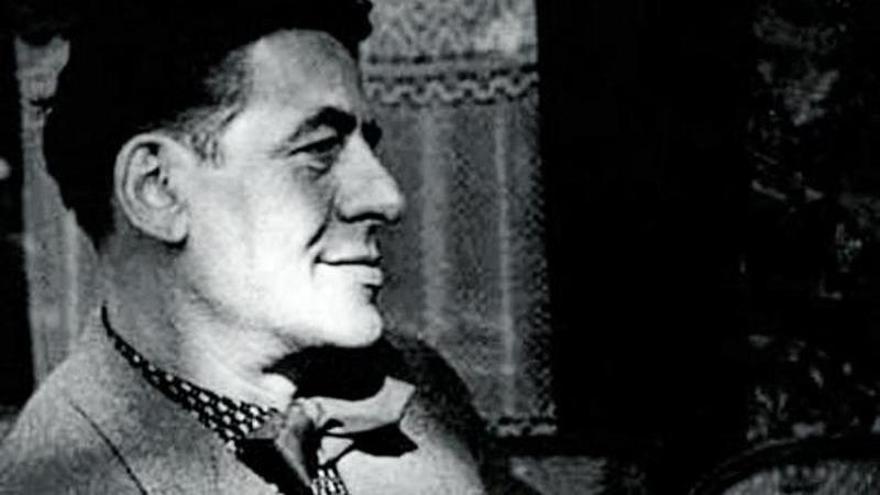
Yesterday was a great opportunity for the most iconic work by Óscar Domínguez to return to the Island 87 years after being exhibited for the first time at the Círculo de Bellas Artes de Tenerife. That option was diluted in a handful of minutes. ‘The electrosexual sewing machine’ (1934-1935) went from a starting price of 1,834,320 euros to 5,245,359 in the blink of an eye: an unaffordable figure for the Cabildo de Tenerife.
Christie’s never reveals the identity of its customers. All its operations are wrapped in an official anonymity that can only be broken by the buyer, that is, if the Cabildo de Tenerife would have taken the cat to the water obtaining the property of the electrosexual sewing machine (1934-1935) of Oscar Dominguez right now we would be waiting for an official statement. If there is no news in the next few hours, that silence would mean that the work has been bought by a museum or foundation.[su incorporación al catálogo será anunciada]or that it has fallen back into the hands of an art collector.
historic opportunity
It’s not every day that an artist’s most defining piece comes up for auction. Yesterday was a propitious date to get the cornerstone of Óscar Domínguez and the Cabildo de Tenerife knew it. 15 years ago The electrosexual sewing machine came to Tenerife. Neither did Christie’s reveal the identity of the person who paid a million and a half pounds for an oil painting on canvas that ended up in the hands of the Tenerife lawyer Miguel Cabrera Pérez-Camacho. Well, actually, he signed a loan contract with the management of the Museo Nacional Centro de Arte Reina Sofía in Madrid, where he was from 2008 to 2012. Pérez-Camacho contacted Christie’s management again in 2013 to organize a new auction. The auction of this operation amounted to 2,452,792 euros. Yesterday was an unbeatable opportunity to acquire a cultural treasure that could be permanently removed from the Island, if the bid fell on the side of a museum or foundation, or momentarily, in the event that the check was issued by an individual: normal it is that the painting forms part of the treasures of a family until it is revalued and the debate on a possible auction is reopened. This waiting period can be endless.
an international claim
The option to bid for The Electrosexual Sewing Machine has nothing to do with the market study that was carried out with the aim of opening an Auguste Rodin museum in the capital of Tenerife, but having ownership of the flagship work of Óscar Domínguez would give a great boost to the museum dedicated to one of the most international figures of surrealism. Having the certificates of ownership of a painting of this depth would put TEA Tenerife Espacio de las Artes in the same division as the MoMa in New York, the Pompidou Center in Paris or the Reina Sofía in Madrid [los tres espacios cuentan con obras del tinerfeño]. The universe of exhibitions works like communicating vessels and the strategy is very popular: you lend me this four and I’ll send you this other. It goes without saying that the operations would be more important as the prestige of the cadres put on the negotiation table increases, that is, if we use an easy-to-understand football simile, it is as if Real Madrid borrowed from Manchester City Norwegian Erling Haaland in exchange for Mariano. If that situation occurred, Sheikh Sheikh Mansour would die laughing.
From Westerdahl to Cabrera Pérez-Camacho
The painter, art critic and writer Edward Westerdahl and Oramas (1902-1983) was the first owner of The Electrosexual Sewing Machine. The painter no longer resided on the Island, but the painting stayed at home and was exhibited at the Círculo de Bellas Artes de Tenerife (1936). This was the first time it was exhibited: in the last 88 years it has been seen in 25 art centers in Spain (10), Sweden (4), Germany (3), France (3), Austria (1), Israel ( 1), Italy (1), United Kingdom (1) and Switzerland (1). In the list of Spanish scales there are three in the Atlantic Center of Modern Art of the palms and two in Tenerife, the one already mentioned at the Círculo de Bellas Artes (1936) and another at the La Granja Art Center (April-May 1996). Westerdahl sold the painting to a gallery in Paris in the late 1960s. [André François Petit]. Years before Franco’s death, the electrosexual sewing machine returned to Spain in an anonymous operation led by the Biosca Gallery in Madrid. Investor Bartolomé March Servera, son of banker Juan March, became the fourth owner of a work that ended up, once again, in a Christie’s auction catalogue. The fifth buyer was again a Canarian and paid a million and a half pounds [Miguel Cabrera Pérez-Camacho] and it was his for almost five years, since in 2013 the auction house of the British capital [Londres, 8 King St, St. James’s] closed again an anonymous sale that yesterday wrote its last chapter with an operation of 5,245,359 euros, the highest price that has been paid for a painting by Óscar Domínguez. The identity of the new owner is still a mystery.
















